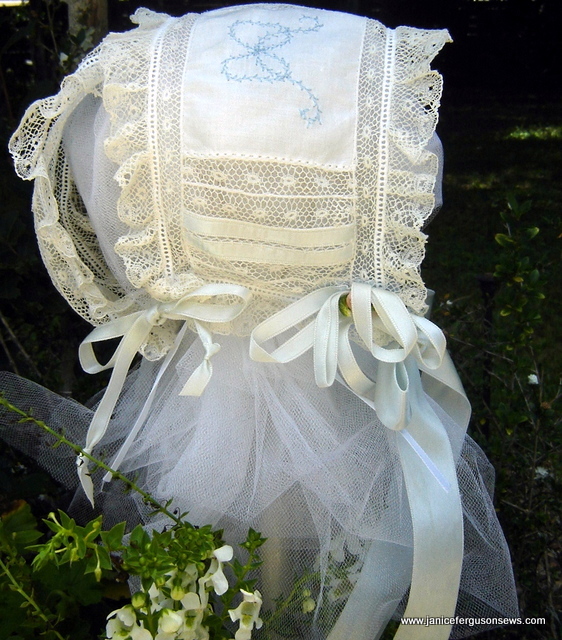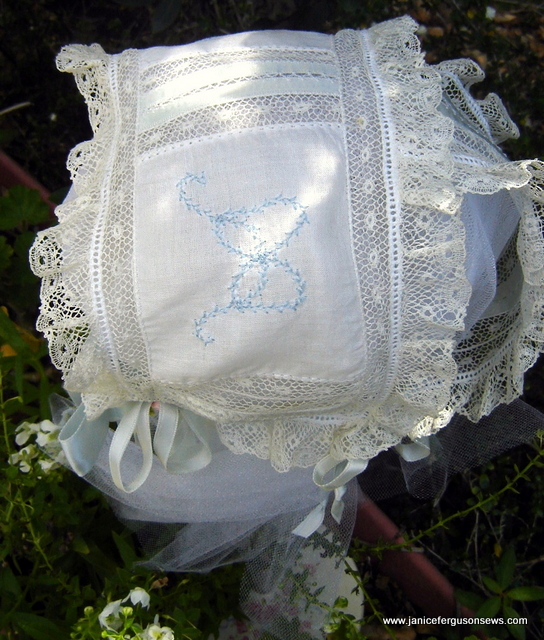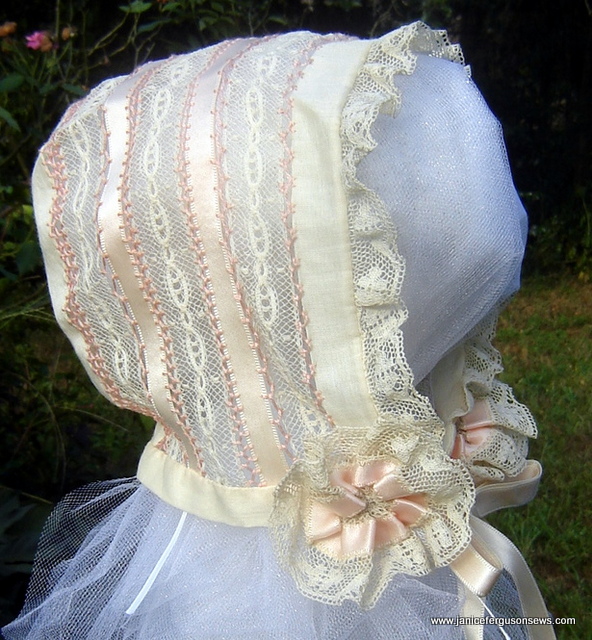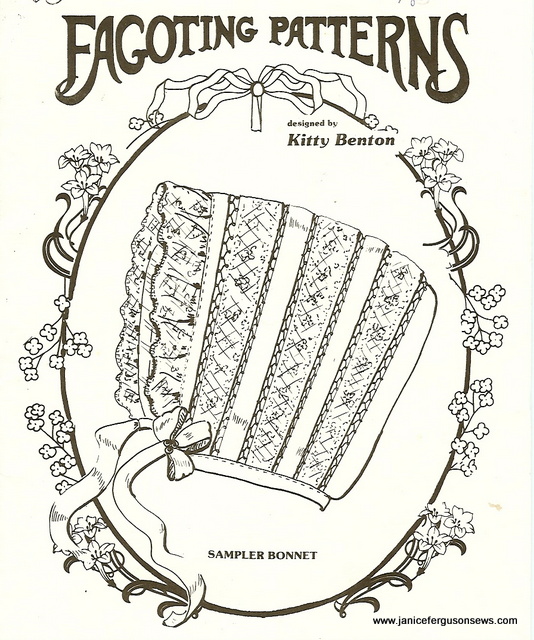There are so many projects and ideas I want to share with you, but time is just too short right now. Vivian Rose is the proud owner of a sweet little smocked popover that I will share with you later and another major project is underway. For now, this re-run~fro, 2010 will have to do.
This T-bonnet is a great little project with some interesting techniques, especially for those who do not use an embroidery machine. I hope new readers will find something of value and those of you who have already seen this post will not mind it the second time around.
~~~~~~~~~~~~~~~~~~~~~~~~~~~~
Enchanting as I find this T-bonnet to be, the techniques used in its creation hold even greater interest. At an Elna Convention outside Minneapolis, Melissa Stone, daughter of renown Sarah Howard Stone, taught this project to an eager group of students, including me.
Mind you, this was before the advent of the home embroidery machines. So for anyone who does not have an embroidery machine, this technique is gold. For those who do, the technique has applications beyond this project.
The T-bonnet is de rigueur, standard heirloom sewing. For directions and measurements for a basic t-bonnet, refer to my earlier post, unimaginatively entitled “T-Bonnet.”
In the class with Melissa Stone, we used the pattern measurements from her mother’s book, French Hand Sewing. But Melissa’s innovative idea for embroidering the bow, without the use of a water-soluble marking pen, was very creative. Continue reading




